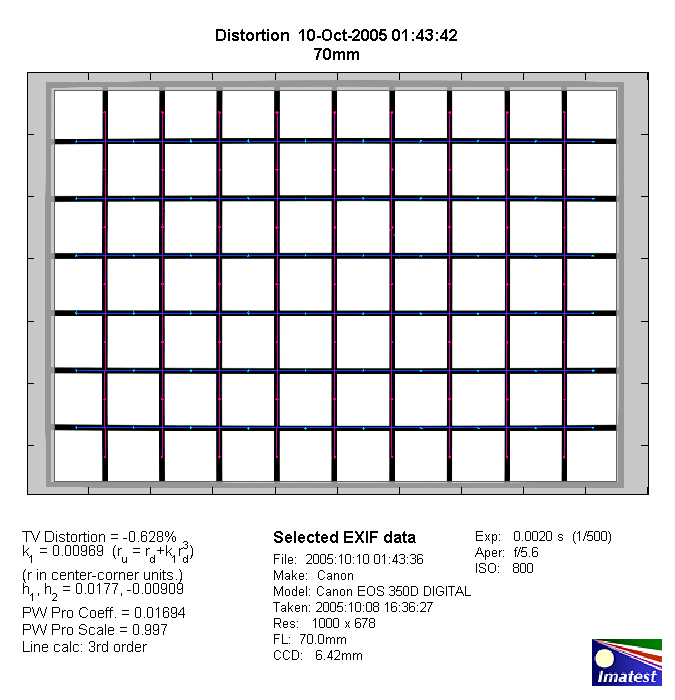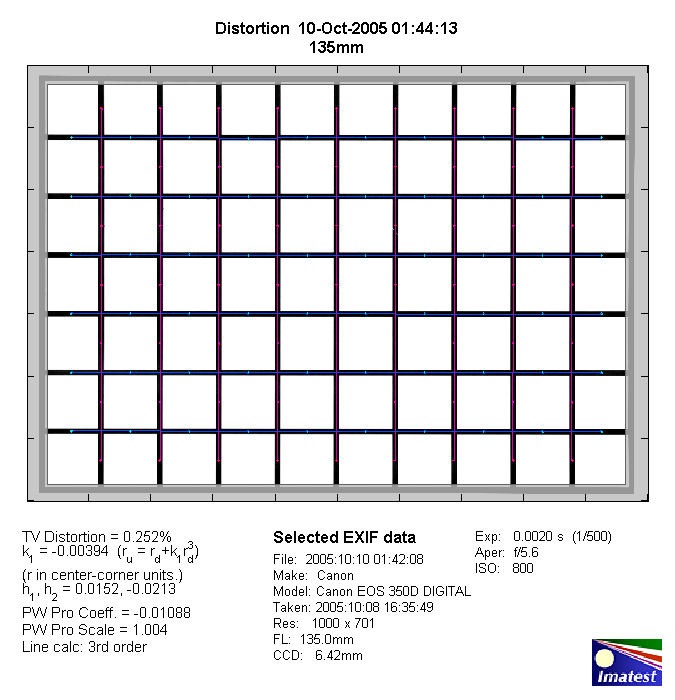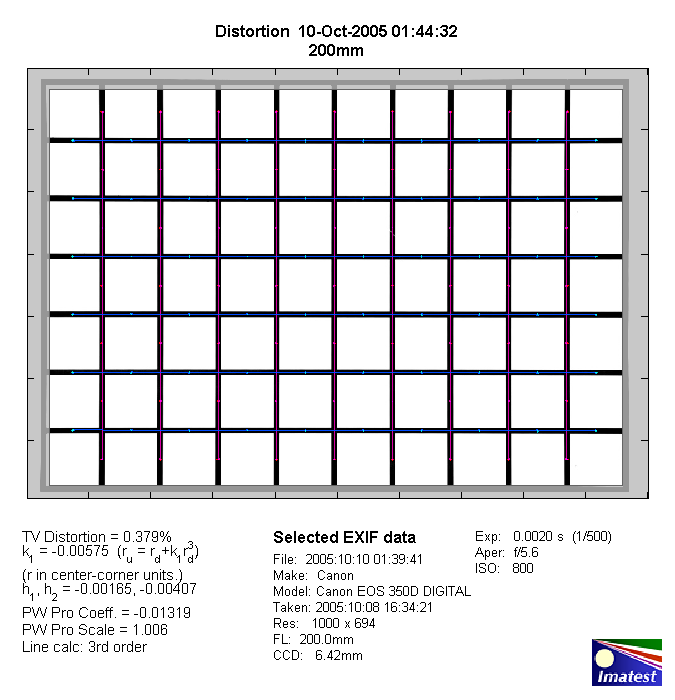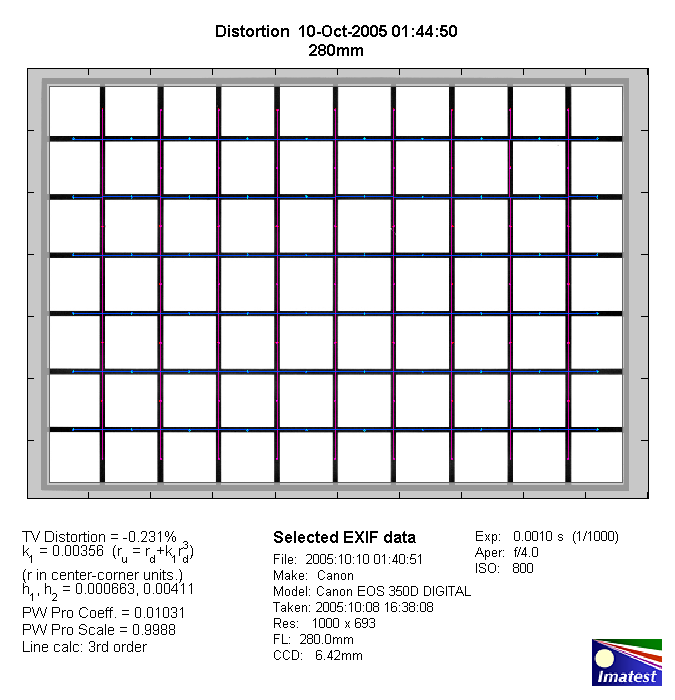|
Canon EF 70-200mm f/2.8 USM L - Review / Test Report - Analysis |
|
Lens Reviews -
Canon EOS (APS-C)
|
|
Page 2 of 3
Distortion
The level of distortion is very low for a zoom lens with very slight barrel distortion at 70mm
and minor pincushion distortion at 135mm, 200mm and with attached EF 1.4x II. An exceptional
performance similar to the EF 70-200mm f/4L and the EF 70-200mm f/2.8 L IS.
70mm:

135mm:

200mm:

280mm (w/1.4x):

The chart above has a real-world size of about 120x80cm. Possibly expect more distortion towards closer focus distances.
Vignetting
Vignetting is very well controlled with the lens - at least on an APS-C DSLR.
At 70mm and 135mm @ f/2.8 vignetting is already well below disturbing levels and hardly detectable
anymore at f/4. At the long end it's more pronounced wide-open with ~0.6EV. Usually
not a problem but noticeable in extreme situations. One stop down it is greatly reduced to a
negligible degree.
When combined with the Canon EF 1.4x II tele converter the vignetting is at ~0.3EV wide-open
which is a non-issue in the field. One stop down it's beyond detectable limits.

MTF (resolution)
In the lab the lens showed that it is far from being qualified for retirement. In fact the
performance figures beat both its IS sister lens as well as the EF 70-200mm f/4L - not
by much (about a half "school mark") but clearly measurable. At all focal length it scratches
the resolution limits of the 8MP APS-C sensor. At f/2.8 the results are already very-good
at f/4-5.6 they're excellent. Even when combined with the EF 1.4x II there's only
a marginal performance penalty.
Please note that the MTF results are not directly comparable across the different systems!
Below is a simplified summary of the formal findings. The chart shows line widths per picture height (LW/PH) which can be taken as a measure for sharpness.
If you want to know more about the MTF50 figures you may check out the corresponding Imatest Explanations
Chromatic Aberrations
The lens also showed an very good behavior regarding
chromatic aberrations (color shadows at harsh light transitions) peaking at about 0.6 pixels
on the average at the image borders - nothing to worry about by most standards.
As expected CAs get a little worse with the EF 1.4x II but the issue remains well within
acceptable limits here as well.

|